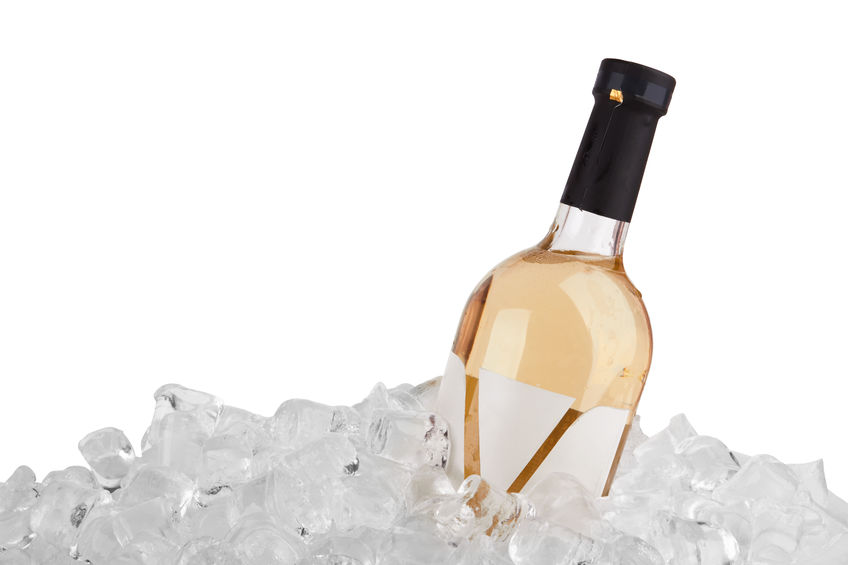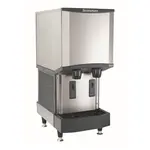Imagine you’re a winemaker in the winter of 1794 in Germany. The cold, biting weather hasn’t left much scope for a great grape harvest, but you still choose to pick the grapes frozen onto the vine. Thinking your efforts aren’t going to be of much value, you resist doubt and crush the frozen grape harvest as the blanket of snow outside thickens. Tasting time comes around a few months down the line, and you’re surprised at how wrong you were. With a solid punch of sweetness and wispy natural flavors in the concentrate, the wine you’ve accidentally created seems to be one meant to be in the goblets of the gods.
If you’re still stuck wondering about what is ice wine, the above scenario comes close to the way this precious drink was created, albeit accidentally, in the latter part of 18th century Germany. As times progressed, ice wine gained more traction in certain markets and grew to become a desired drink in several countries. With production techniques spreading to countries with colder climates, Ice Wine is a bottled delicacy produced mainly by Canada, United States, Germany, and Austria.
How is Ice Wine Made?
The most common question posed by neophyte winemakers and enthusiasts is - how to make ice wine? The primary factor to consider while making ice wine is the time you harvest the grapes. Ideally, ice wine is made from grapes that are to be processed when they’re at about 20F or negative seven degrees Celsius. The icy grapes are then pressed while the water within is still crystalline in the form of ice. Due to a lower melting point than water, the sugar, tartaric acid, and tannins remain liquid. This liquid concentrate is loaded with sugars and is one of the sweetest squeezes. Only between one or two-tenths of the crushed material is used to make ice wine. The concentrate has to be fermented anywhere between a quarter to half a year for it to attain its signature taste. The fermentation is deliberately carried out at low temperatures to help retain the freshness of the grape, imparting its traditional fruity flavor to the ice wine. A critical balance of sugary goodness and acidic tang is found in this dessert wine, something to keep in mind when learning about how to make ice wine.
Grape types for Making Ice Wine
The first ice wines were made from traditional German Riesling grapes. However, the market has since expanded and provided more room for a variety of grapes to be incorporated into the ice wine process. While red ice wines can utilize the well-known Merlot and Cabernet-Franc grapes, white ice wines use Vidal grape varieties. Chardonnay and Sauvignon Blanc grapes are also used in certain ice wines, based on the country of origin.
How to Store Ice Wine
Ice wines can be aged for up to ten years in an unopened condition after corking. However, authentic German varieties like Rieslings are aged for longer than ten years. Ice wines are to be stored in lower temperatures to help the wine retain its partly viscous texture, fruity flavor, and high sugar content. Ice wine meant for consumption must be chilled down to 20 or 10 degrees Fahrenheit before being served. You can also use good-quality ice cubes from an ice machine to chill a glass before serving this dessert wine. An opened bottle of ice wine can be stored for about four to five days before it becomes unconsumable. If you’d prefer a hint of acidic tang with your ice wine, try not aging it for too long.
How to Drink Ice Wine
Due to ice wine being a dessert wine, it is best served after the meal with a choice of other desserts or cheeses. The sweetness index is on the higher end of the scale and you can look to balance your palate with something that has high-fat content. Soft cheeses pair best with ice wine served in a glass chilled with half-dice ice. Desserts like cheesecakes, chocolate mousse, ice creams with delicate flavors like vanilla, and certain pound cakes go well with this high-sweet wine as well. Bear in mind that the desserts should not be sweeter than the wine itself, lest they throw the balance off your palate. Thanks to its punchy fruit-like flavors, ice wine can also be served with high-fat meats like pork and beef.
Authentic Ice Wines
Original ice wine is made in select countries that have temperatures cold enough to freeze grapes on the wine. Traditionally, the wine was restricted to Germany and Austria. In the 20th century, specifically in the latter part of it, ice wine production made its way into the northern parts of the United States and Canada. Ice wine production is not easy and sometimes winters might not be cold enough in these countries to freeze the grapes naturally. Commercial frozen grapes made into wine are not considered “true” ice wines and violate the first step of how to make ice wine. Wines derived from commercially frozen grapes are labeled “iced wine” instead. Certain countries even prohibit the usage of the term ice wine if the grapes used are not frozen using the traditional method. Though ice wine is a dessert wine, bottles labeled “dessert wine” are not necessarily ice wines. Make sure you read the labels carefully before making your purchase and read up on the history of the winery and its methods of production.
Pricing
Ice wines tend to be more expensive than other dessert wines due to their intricate production processes and their reliability on the weather. Ice wines also use a larger number of grapes compared to traditional wines, where only between 10 and 20% of the juice derived is usable. The naturally frozen grapes are also handpicked by laborers and do not go through mechanized picking routines. An average ice wine bottle ranges from thirty and fifty USD for a 375mL bottle. Unique varieties like Rieslings, Chardonnay, and Canadian ice wines can cost higher than the average thanks to the rare varieties of grapes they use to make their ice wine. Cheaper labels might be available; however, these are more likely to be knock-offs or adulterated counterfeits.
The Takeaway
How to make ice wine and storing ice wine are highly intensive procedures involving several natural variables. The rich bronze-colored product laced with fruity brilliance and sugary extravagance is a perfect offering during dessert. Though its popularity might not be as reaching as other renowned wines, ice wines have a niche base of enthusiasts who just cannot ignore a chilled glassful of this saccharine bliss. If you’re looking for aged bottles, expect woody, natural flavors passed onto the wine. Whether it’s a hint of maple or hazelnut, expect a rush of taste that also reminds you of molasses and grape. If you’re looking for dessert wine options, ice wine could be a great start.












